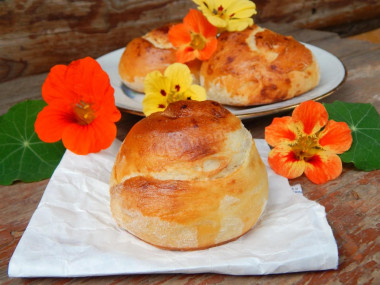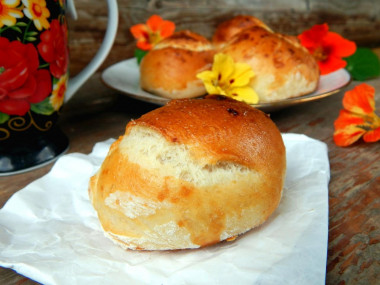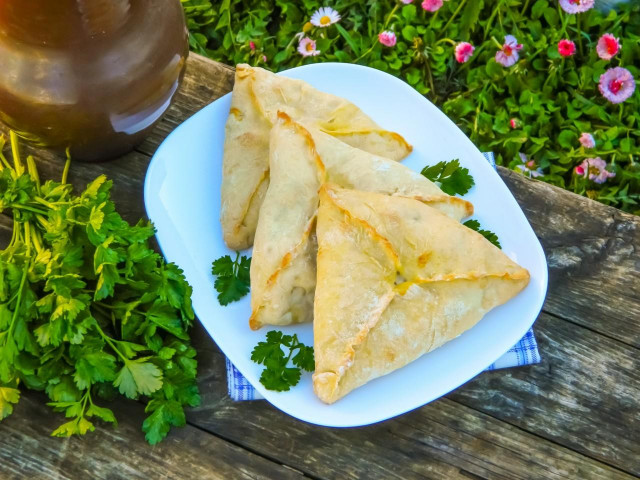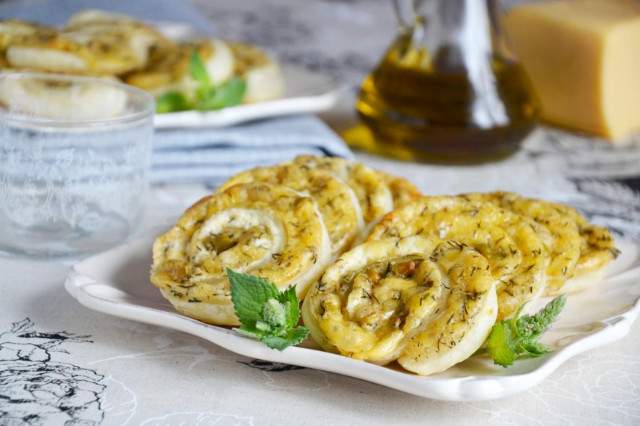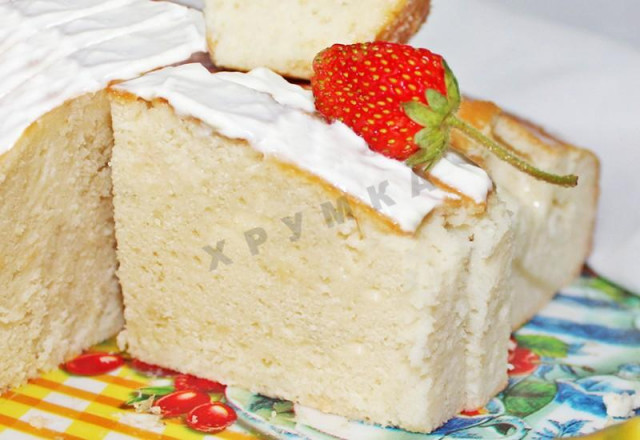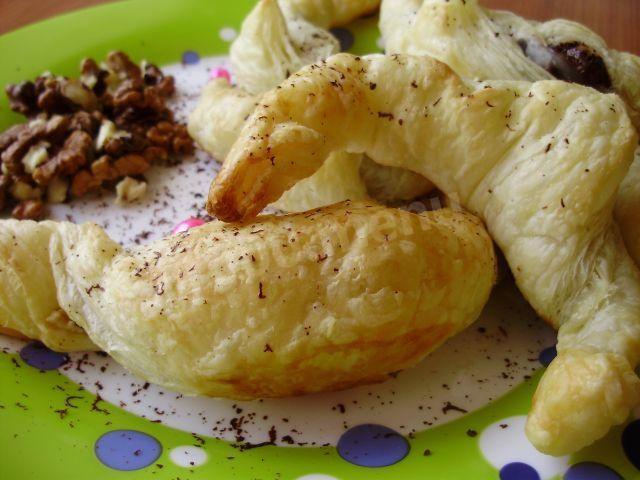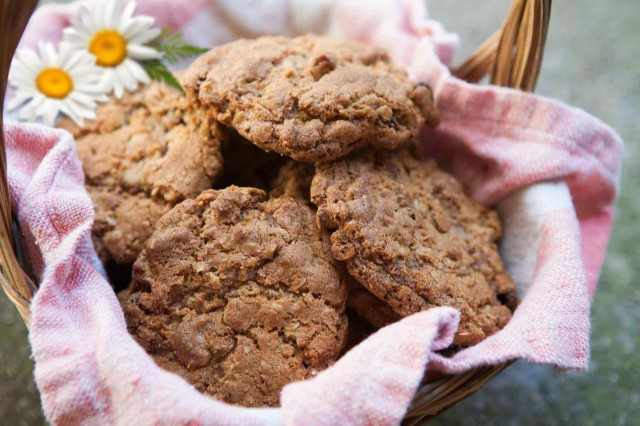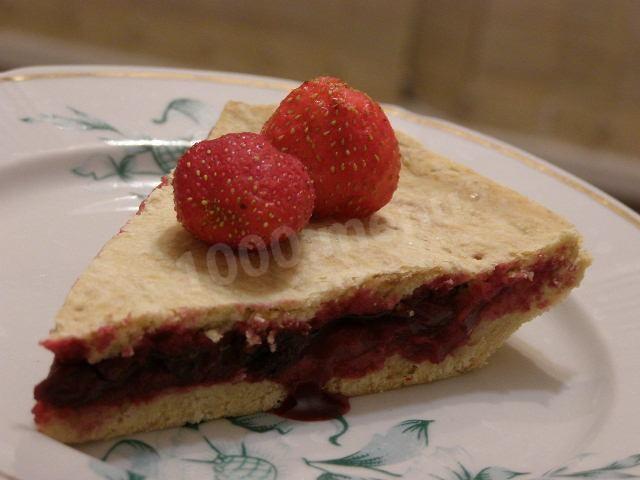Composition / ingredients
Step-by-step cooking
Step 1:
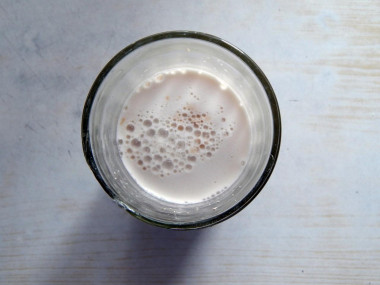
How to bake Coils at home?Prepare the ingredients for baking the coils. The ingredients should be at room temperature, so we take them out of the refrigerator in advance so that they warm up. We begin the preparation of yeast dough with sourdough. Pour warm water into the glass, the water should not be hot (about 30 degrees), you can warm it in a microwave oven.
Step 2:
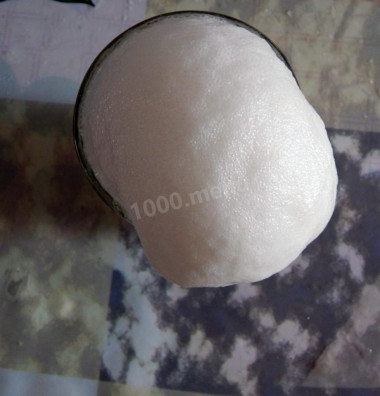
Add yeast, a teaspoon of sugar and a tablespoon of flour to the glass. Mix the mixture thoroughly and put it in a warm place for 15 minutes. During this time, the yeast should be activated. If everything is done correctly, then a yeast cap of foam should form on the surface of the mixture.
Step 3:
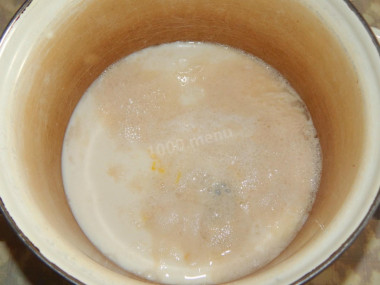
In a deep bowl or saucepan, drive in a chicken egg, stir it with the addition of salt and the remaining sugar for the dough. Pour the melted butter, cooled to room temperature, heated to 30 degrees in the microwave, and the prepared sourdough into a bowl. Mix the mass.
Step 4:

Pour the flour sifted in parts. Flour can be used to prepare the dough a little more or less. It all depends on the quality of the flour, so he watches the consistency of the resulting dough. It should be slightly sticky, but do not reach for your hands.
Step 5:

When it has gathered into a ball, we spread it on the ground, knead it with our hands, adding a little flour if necessary. Again put in a bowl and put in a warm place for 2 hours. During this time, we knock it once and let it rise again. The dough is ready for baking.
Step 6:
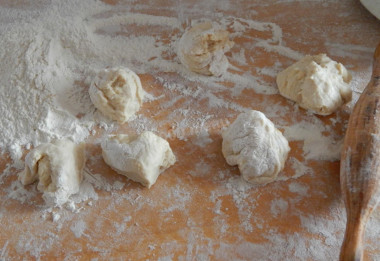
Divide it into small pieces of the same size. Each of which is rolled out into a rectangular layer about 0.5 centimeters thick.
Step 7:

Spread it with sour cream or softened butter and sprinkle with sugar.
Step 8:
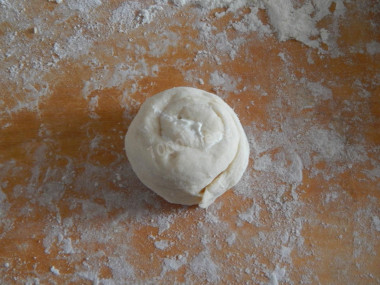
Roll up into a roll and flatten it on top, forming a bun.
Step 9:
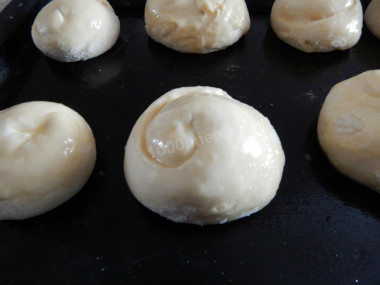
Grease the form with oil, spread the buns on it, leaving enough space between them. We put the bun on proofing in a warm place for 20 minutes. Beat the chicken egg. We lubricate the raised buns with it. Preheat the oven to 180 degrees. We put the buns in the oven. Bake for about 25 minutes.
Step 10:

We take out the rosy buns and serve them with tea, coffee or milk. Have a nice tea party!
Be prepared for the fact that flour may need more or less than indicated in the recipe. Focus not on the amount of flour, but on the desired consistency of the dough. To avoid mistakes, read about flour and its properties!
The liquid in which yeast is bred should be pleasant to the touch, no higher than 40 degrees. Why is this important? In a warm environment, yeast is well activated, in a hot one it will die, and in a cold one it simply will not work. To avoid unpleasant surprises, check the yeast before mixing with the rest of the ingredients. Pour a little warm milk into a bowl, stir in the yeast. Cover the bowl with a kitchen towel and put it in a warm place without drafts for 10-15 minutes. During this time, a foam yeast cap should appear on the surface of the sponge. If this did not happen, then the fermentation process has not started (the yeast is overdue or spoiled). In this case, it is worth taking other yeast, otherwise baking will not work.
Important! Using dry yeast, it should be borne in mind that they occur in two forms: active and instant (read the instructions carefully before use!).
Active dry yeast looks like beads or small balls. Before applying them, they must be brought out of the "sleep mode". To do this, the active yeast is diluted in warm sweet water, milk or whey. The resulting bubbles, foam or "cap" indicate that the yeast is ready for further use. Active dry yeast must be brought to complete dissolution in the liquid, otherwise, due to the remaining grains, the dough may not rise and the baking will be spoiled (yeast grains that have not dissolved in the liquid and got into the dough will no longer disperse on their own, which means they will not work).
Instant dry yeast is easier to use. They do not need to be activated before use. Such yeast, along with other ingredients, is simply added to the dough. As a result, the baking time is reduced.
It should also be remembered that both types of dry yeast may differ in their activity from different manufacturers.
Caloric content of the products possible in the composition of the dish
- Whole cow's milk - 68 kcal/100g
- Milk 3.5% fat content - 64 kcal/100g
- Milk 3.2% fat content - 60 kcal/100g
- Milk 1.5% fat content - 47 kcal/100g
- Concentrated milk 7.5% fat content - 140 kcal/100g
- Milk 2.5% fat content - 54 kcal/100g
- Sour cream with 30% fat content - 340 kcal/100g
- Sour cream of 25% fat content - 284 kcal/100g
- Sour cream with 20% fat content - 210 kcal/100g
- Sour cream of 10% fat content - 115 kcal/100g
- Sour cream - 210 kcal/100g
- Granulated sugar - 398 kcal/100g
- Sugar - 398 kcal/100g
- Butter 82% - 734 kcal/100g
- Amateur unsalted butter - 709 kcal/100g
- Unsalted peasant butter - 661 kcal/100g
- Peasant salted butter - 652 kcal/100g
- Melted butter - 869 kcal/100g
- Salt - 0 kcal/100g
- Water - 0 kcal/100g
- Wheat flour - 325 kcal/100g
- Chicken egg - 80 kcal/100g
- Dry yeast - 410 kcal/100g


